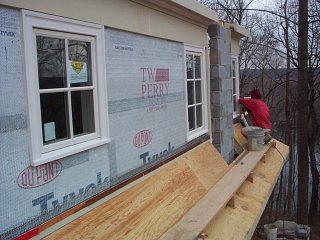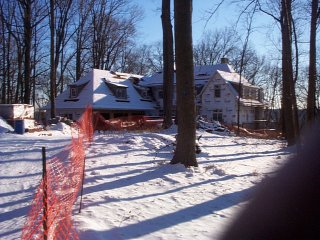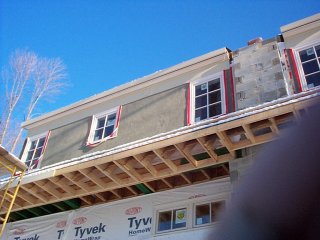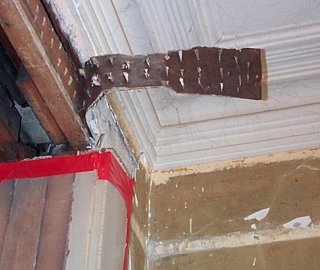 |
 |
Home made metal lath was made by beating
sheet metal with a hatchet-in about 1880 |
Damaged plaster moldings will be restored by
me. |
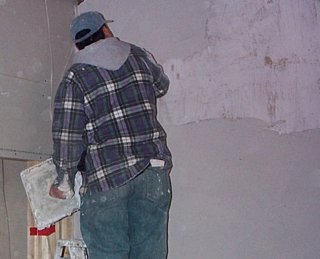 |
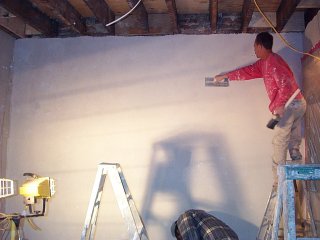 |
The old walls on masonry are resurfaced.
First the walls are painted with Euco-weld,
a bonding agent.
Carlos trowels on a thin coat of veneer basecoat. |
Next, finish coat is applied and troweled
smooth. |
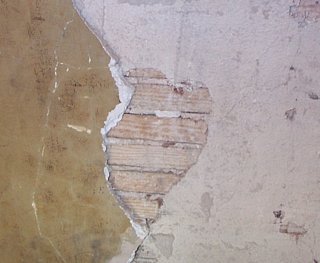 |
A view of an old wall showing wood lath
and lime and sand basecoat.
Q. What holds the plaster on?
A scratch coat is applied squishing the mortar
betwwen the wood lath strips. These squishes
are called keys.
Lime and sand was widely used in houses up until
about 1930. Gypsum plaster was used in
commercial buldings and some houses
from just before the turn of the century. Lime and sand
is
real crumbly, where gypsum plaster is
rock hard.
We cover the old wood lath with metal lath
and gypsum plaster. |
A view of the old fieplace that was rebuilt.
This is an interesting project.
Please check the next update.
|
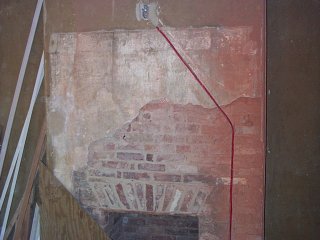 |

